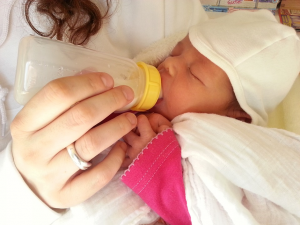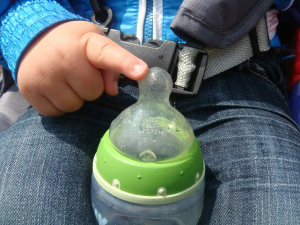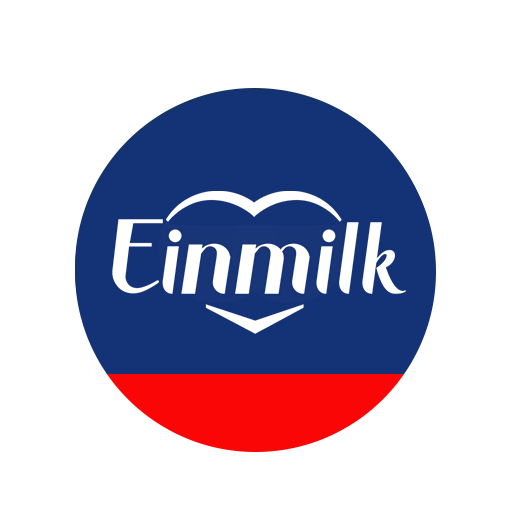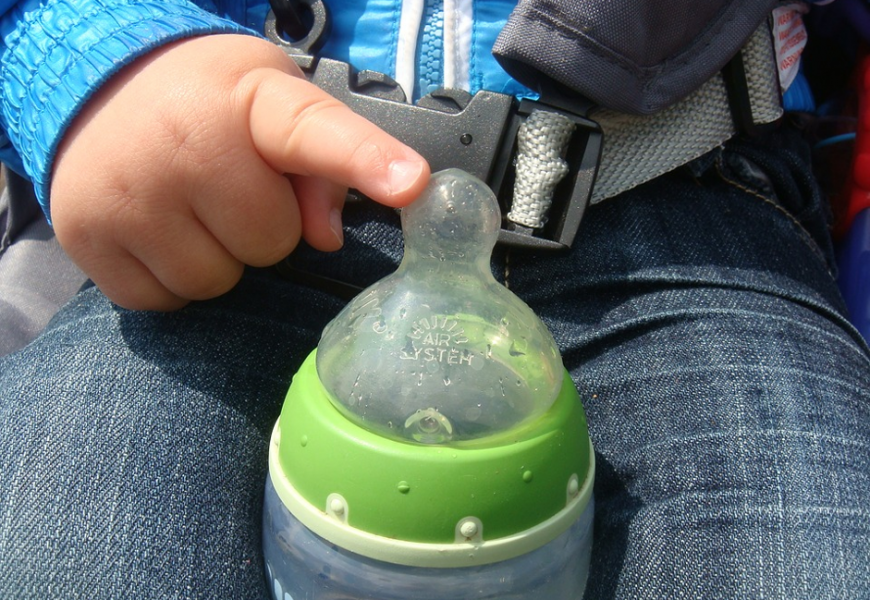Baby’s milk bottles need to be cleaned thoroughly after each milk feed to prevent the growth of nasty bacteria that may lead to severe tummy upsets. They in turn can lead to serious consequences for infants who have yet to build up their immune system.
While regular dishwashing detergent gets the job done, improper washing could lead to your baby ingesting traces of detergent. There are bottle cleansers specifically formulated with natural ingredients for washing baby bottles too.
Are there any other ways to clean the bottles in a natural way that’s safe and effective? The answer is yes! Instead of the regular bottle cleanser, you can opt for any of these methods listed below!
Do note that after cleaning the items, they should be sterilised by boiling, steam or UV for babies below 12 months of age.

What are the safe ways to clean your baby’s milk bottles?
- Baking Soda
Baking soda is affordable, inexpensive and can be used for many purposes. It is an effective natural cleaning agent which can be used to cleanse your baby bottles. To do so, boil a big pot of water and add two tablespoons of baking soda. After mixing the solution thoroughly, place the bottles in and let them soak for the night. Scrub and rinse the bottles the next morning to ensure that the baking soda is completely removed. Then, lay the bottles out to dry and sterilise.
- Eco Enzymes
Eco enzymes are not only incredibly versatile, they cost close to nothing to make and uses readily available ingredients. Making eco enzymes require a bit of time as the enzymes need to ferment. However, the result is an all-purpose solution that can be used for the skin, as fertiliser, to clear drain chokage and a whole lot more!
Another advantage is that it helps to reduce the amount of fruit scraps in your home that would otherwise be incinerated.
Here is the recipe to create eco enzymes:
INGREDIENTS
- Fruit waste, including peels, seeds and flesh. Do not use hard parts such as durian husks and mango seeds.
- Sugar (white or brown)
- Water (can be recycled water from washing rice, fruits or vegetables)
- An airtight plastic container. Store the container in a cool and dry place away from direct sunlight.
METHOD
- Make 16 equal folds on a piece of paper. Unfold the paper and put it against the container. Use a marker to mark 16 lines on the container that correspond to the folds. Then add one part sugar, three parts fruit peel or juiced fruit residue and 10 parts water.
- Give the mixture a good shake and tighten the lid.
- In the first month, stir every day or every other day to release fermented carbon gas. In the second month, stir once a week and, in the third month, once in two weeks. If your container has a small opening, try to release the gas daily in the first month or tie a plastic bag at the opening with rubber band to allow gas to enter it.
- The mixture should be ready in three months. Use a sieve or pillow case to filter the residue.
To use as a bottle cleaner, mix one part eco enzymes with one part natural base soap.
- Natural Soaps
Natural soaps are environmentally friendly and do not contain harsh chemicals. Most natural soaps are in bar form. Simply scrape bits of the soap bar into the bottles and mix with water to clean. The ingredient list should be easily understandable with natural ingredients instead of strange sounding chemicals that are tongue-twisters to pronounce. A safe bet is to use castile soaps. Castile soap is made from vegetable oil and can be used to clean bottles safely.

 Bottle teats are susceptible to developing mold if not properly cleaned. How do you clean bottle teats?
Bottle teats are susceptible to developing mold if not properly cleaned. How do you clean bottle teats?
Which of the above natural methods have you tried? Let us know in the comments!

